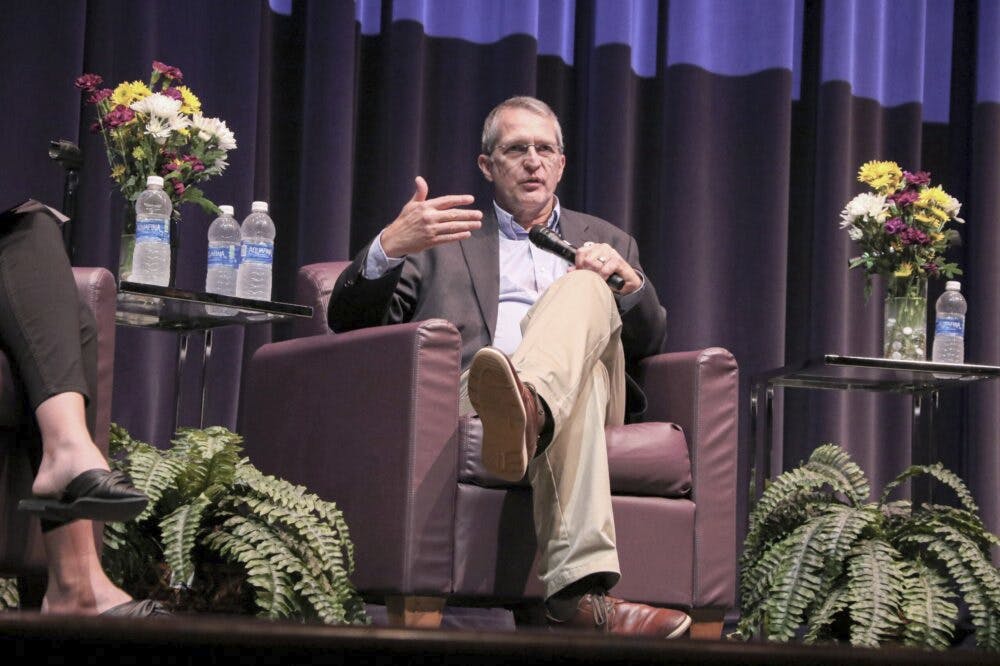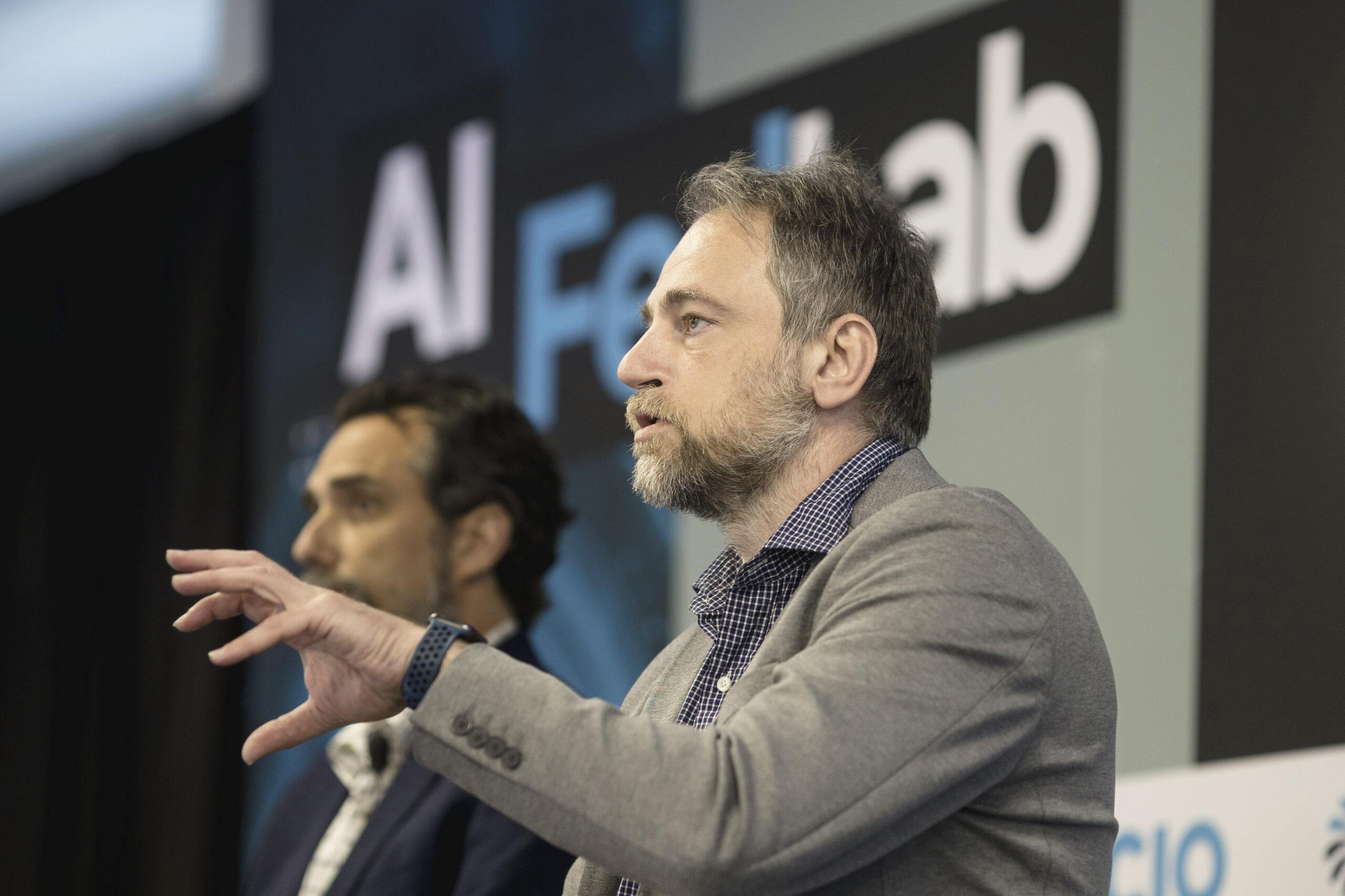From 2019 to 2020: What the New Year Will Bring in VA IT
VA touts digital experience accomplishments and goals for the year ahead.

The VA’s accomplishments in meeting MISSION Act goals “was probably the biggest thing on the radar,” said Department of Veterans Affairs CIO James Gfrerer reflecting on the VA Office of Information Technology’s top accomplishments over the past year.
Almost a year after taking on the role of CIO, Gfrerer reflected on top accomplishments the agency has seen throughout 2019 during a panel at the FedHealthIT 100 event in Washington, D.C. Most of those accomplishments centered on the digital experience.
VA OIT launched the MISSION Act June 6, a deadline set forth by a presidential mandate for VA community care program consolidation and improvement.
“We developed Agile and were very strict about that application,” Gfrerer said. “We said this is what we can deliver on June 6, and we’ll make it beautiful afterward, but we need to get to mission success. … On June 6, that’s what we did.”
Other transformative digital experience projects within the VA were quite successful for the agency as well. One being telehealth, which Gfrerer said has seen a significant increase of use across the VA with its beneficiaries, about five of which live in rural areas and often depend on remote access to care.
Gfrerer also highlighted the relaunch of VA.gov, which involved the consolidation of VA services onto one platform. Since the relaunch, there has been a 572% increase in claims views, he said.
“We are collapsing everything down on VA.gov, and Charles Worthington, our acting chief technology officer, his digital experience program office is doing that very deliberately with business partners to standardize and to use human-centered design so we always keep the veteran … at the crux of everything we do for that development,” he said.
2019 was also a year of transformation in VA’s IT assets. The agency has worked on decommissioning legacy systems, such as the VistA electronic health record, and replacing them with new ones, such as Cerner Millenium — the new record that aims for greater integration and interoperability with the Defense Department.
VA also established this year its first chief data officer (Kshemendra Paul) who Gfrerer said will co-chair the agency’s Data Governance Council and will help VA examine its data architecture and bring greater standardization of it.
Gfrerer also said that VA OIT successfully hired to its authorized staffing levels this past year and that VA’s cloud migration is well on track.
“Our Enterprise Cloud Support Office has really moved aggressively,” Gfrerer said. “We’re on pace to put about half of our portfolio 350 systems or applications in the cloud by 2020 for cybersecurity.”
In many ways, the successes VA has seen build off of initiatives Gfrerer highlighted earlier this year — particularly the focus on expanding digital health services, meeting requirements under the MISSION Act, and pushing forward both the EHR modernization effort under Cerner Millennium and the cloud migration.
Although VA has made strides in its IT initiatives over the past year, Gfrerer’s insights for the agency’s 2020 goals indicate there’s still much work ahead for him and his office.
Many of the 2020 initiatives at VA are continuations from 2019. One of these is to continue strengthening VA’s IT workforce and working with the Federal CIO Council in doing so, as well as continuing to support the growth of services like telehealth, telehearings and the Million Veteran Program.
“[Telehealth] is only going to expand, as we all know, so our job within all it is to work with partners, work with [the Veterans Health Agency], and to make sure that the infrastructure and everything is there to support it,” Gfrerer said, “because they are obviously very bandwidth-heavy applications and systems, and we’re going to have to work very judiciously to make sure we’re there to meet it.”
Other initiatives on the 2020 agenda include the goal of improving acquisition and vendor management
“[We] have about a billion dollars of tap tech spending each year, and I can tell you that we’re doing everything we can to be a better partner with the commercial sector because we need you — especially with our buy-versus-build strategy,” he said.
One other big initiative for 2020, Gfrerer said, is to meet the VA call for the expansion for the agency’s caregiver program, which is one of the components required in the MISSION Act. This is amid the work Gfrerer’s office has done this year in re-platforming the caregiver program to a commercial-off-the-shelf solution this year with Agile and human-centered design aspects to it.
With the challenges ahead in meeting these goals, the department is striving to improve in all aspects of its services.
“We are going to strive to be a world-class organization that’s really support three very different administrations — a world-class health care organization, a world-class $130 billion financial services industry with veterans’ benefits, and then certainly the National Cemetery Administration and the important sacred duty that they have every day,” he said.
This is a carousel with manually rotating slides. Use Next and Previous buttons to navigate or jump to a slide with the slide dots
-

Trump Taps Maj. Gen. John Bartrum to Lead VHA
Nominated for VA's top health role, Bartrum brings over four decades of military and public service to the agency.
3m read -

DOE Accelerates AI Research to Defend Critical Infrastructure
The Energy Department and its national labs are increasing partnerships to advance AI research, scale new tools and boost national security.
3m read -

AI Revolutionizes Defense Decision-Making
AI enhances access to vital information for defense leaders, empowering faster, more informed decision-making on and off the battlefield.
29m watch -

Opinion: AI Is Reshaping Government, Can Contractors Keep Up?
To compete in the new AI-driven public sector, contractors must demonstrate the one thing machines can’t deliver: human originality.
4m read








